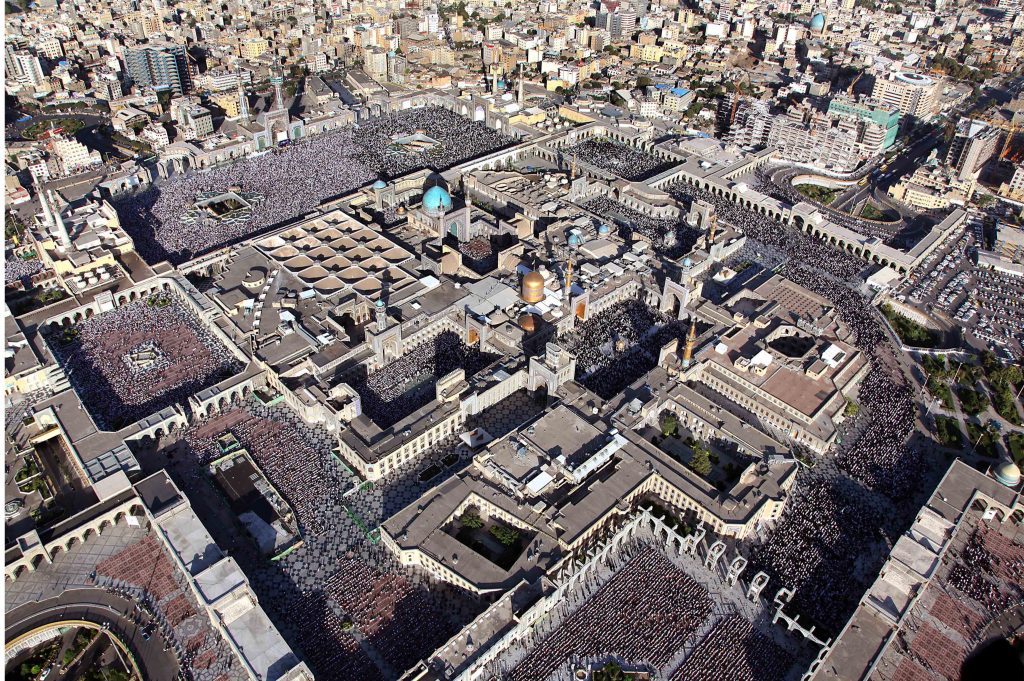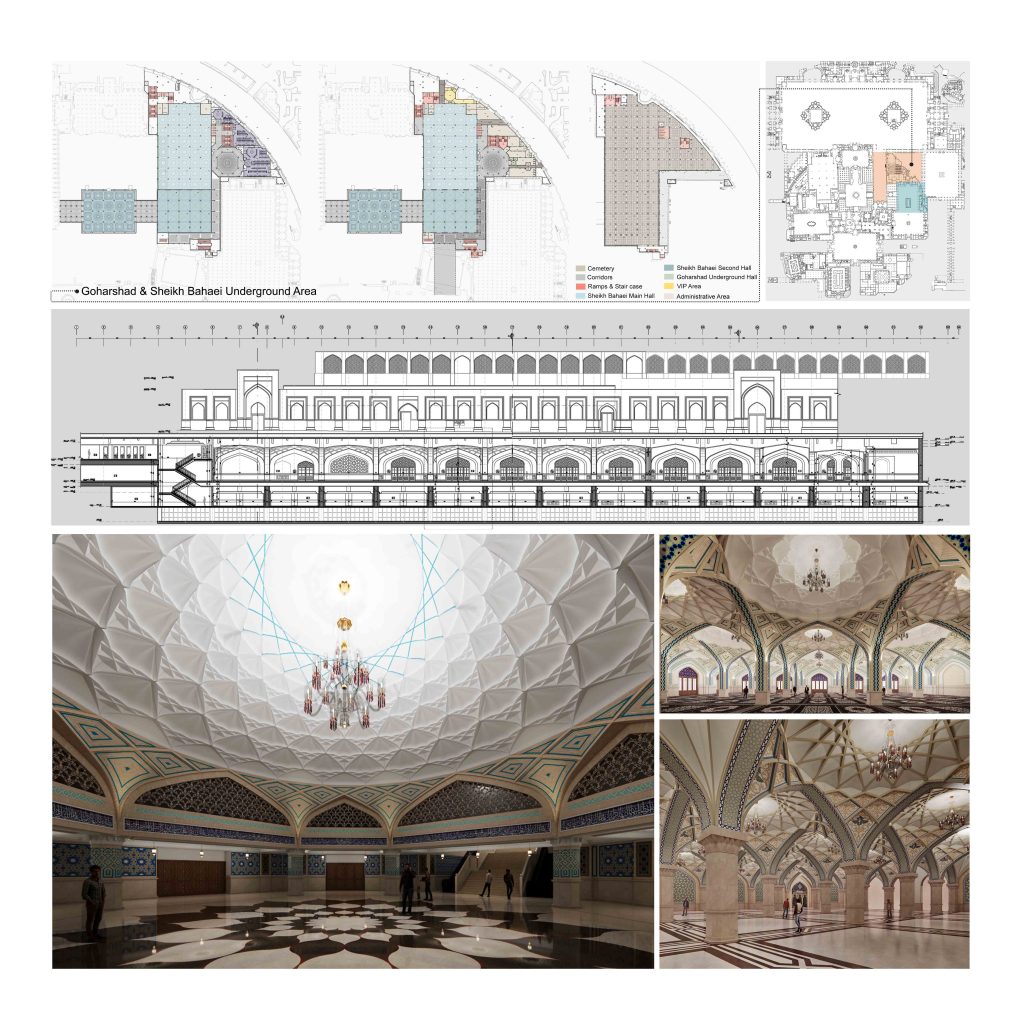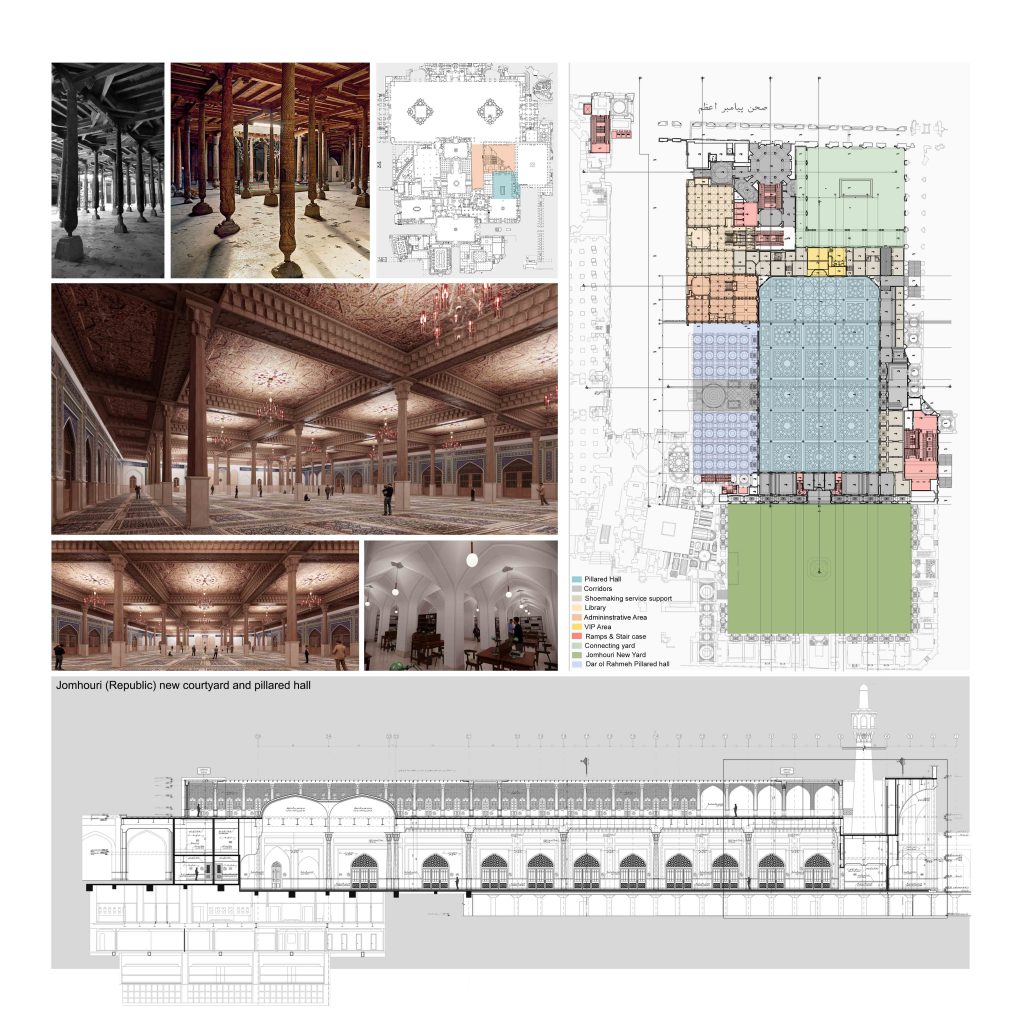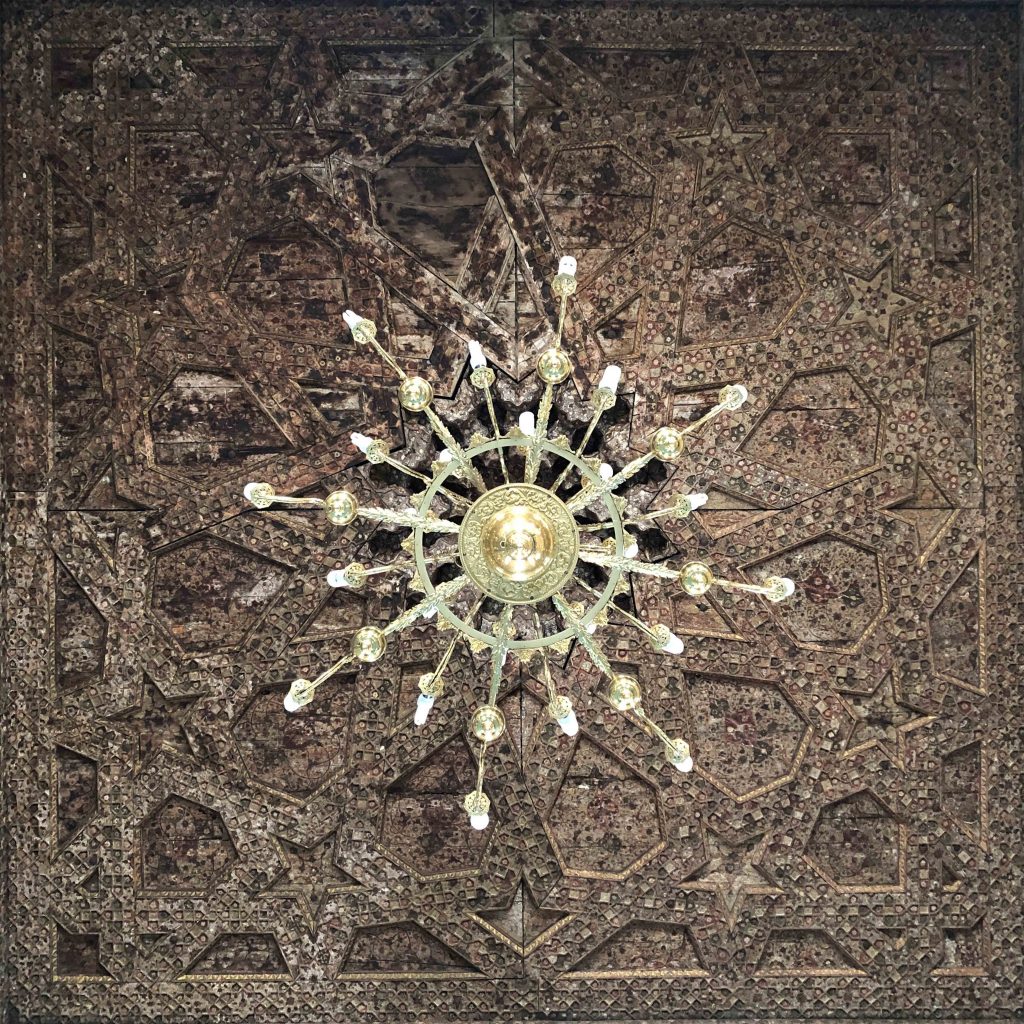
The Razavi shrine complex has been following the subsurface development policy for the past several years in line with the quantitative development of pilgrimage spaces.The development of underground naves to create desirable roofed spaces was an accessible and less complicated solution in exchange for covering some courtyards that often have historical values.
With the increasing number of pilgrimages in the Razavi Shrine and the presence of more pilgrims, the need for a roofed space to provide places for ceremonies and the comfortable presence of pilgrims in these spaces was strongly felt. In the first stage, it was proposed to cover the courtyards and open spaces of the shrine. This issue was rejected by the consultant due to the many interventions it would create in the historical body of the shrine.In terms of rituals and rituals of pilgrimage, being under the sky and being close to the shrine has been one of the ancient traditions in visiting holy tombs. With all these issues and in response to the need for covered spaces in the Razavi shrine, the expansion of underground spaces was prioritized.




Go to top